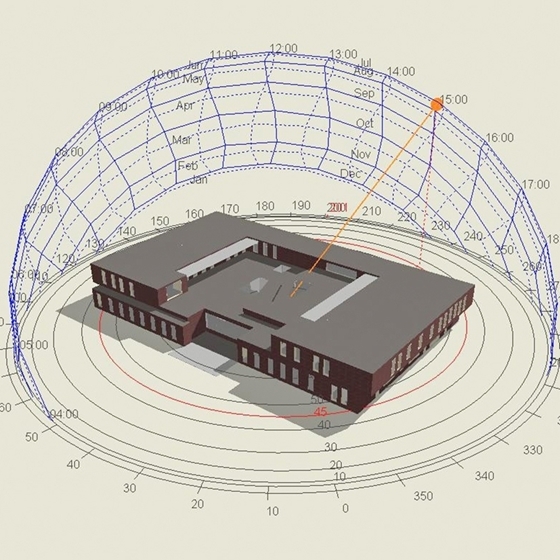Overheating in buildings: better safe than sorry
When we are too hot, we start to feel uncomfortable. We begin to sweat, get thirsty and irritable, and we feel our energy draining. This makes us a lot less productive. That is why limiting overheating is a must in any new construction, but also in major renovations.

Ingenium always tries to avoid the use of active cooling by offering more energy-friendly and sustainable alternatives. This calls for summer comfort simulation in every project. However, there are a number of starting points – based on the Quadras Energetica principle – to be taken into account already in the design phase:
1. Limit the requirement for cooling.
2. Meet the remaining demand sustainably with passive cooling.
3. Where simultaneous cooling and heating is needed, use energy exchange.
4. Is active cooling unavoidable? Then use it efficiently!
Based on these principles, we would like to give some general tips:
1. Use passive measures to limit the likelihood of overheating
By applying passive measures, we can limit the likelihood of overheating and so keep the ultimate cooling requirement low. Possibilities here include:
- Using glass with a sufficiently low solar factor.
- Installing external blinds on the east, south and west sides of the building. Sun protection on the inside has little to no effect. In the ideal case, use mobile outdoor solar protection that is controlled as a function of solar radiation. Another option is fixed solar protection elements, precision-placed on the basis of simulations.
2. Supply the remaining cooling requirement sustainably
Provide a ventilation strategy that uses colder outdoor air at night to cool the building mass. This can be done via grilles or automatically opening windows, or via an existing ventilation system. Leave as much building mass as possible by avoiding raised floors and suspended ceilings where feasible.
3. Is there a simultaneous need for cooling and heating?
Make sure that there is an energy exchange. For example, the heat extracted from the south side of the building can be raised to a higher temperature via a heat pump and used, among other things, for producing sanitary hot water.
4. Supplement with active cooling in a sustainable way
If active cooling (and heating) is unavoidable, use it efficiently. This can be done in a sustainable way, for example by using thermal energy storage or a BTES system

A few further remarks are appropriate here. For example, there can be a certain tension between passive measures (sun blinds) and maximum daylighting. Proper comfort and daylight simulations can help find a right balance. Moreover, comfort and therefore also overheating are strongly personal matters. When users can intervene in their own comfort (by opening a window, for example), higher temperatures are more easily perceived as acceptable.
Want to know how you too can keep a cool head this summer? Our expert Raf De Herdt will be happy to help you: raf.deherdt@ingenium.be.